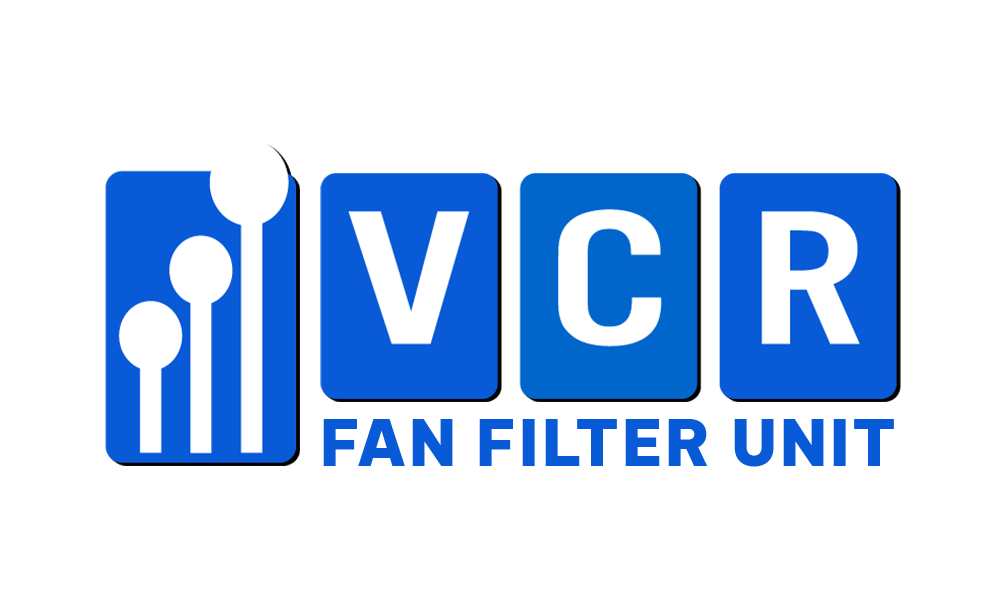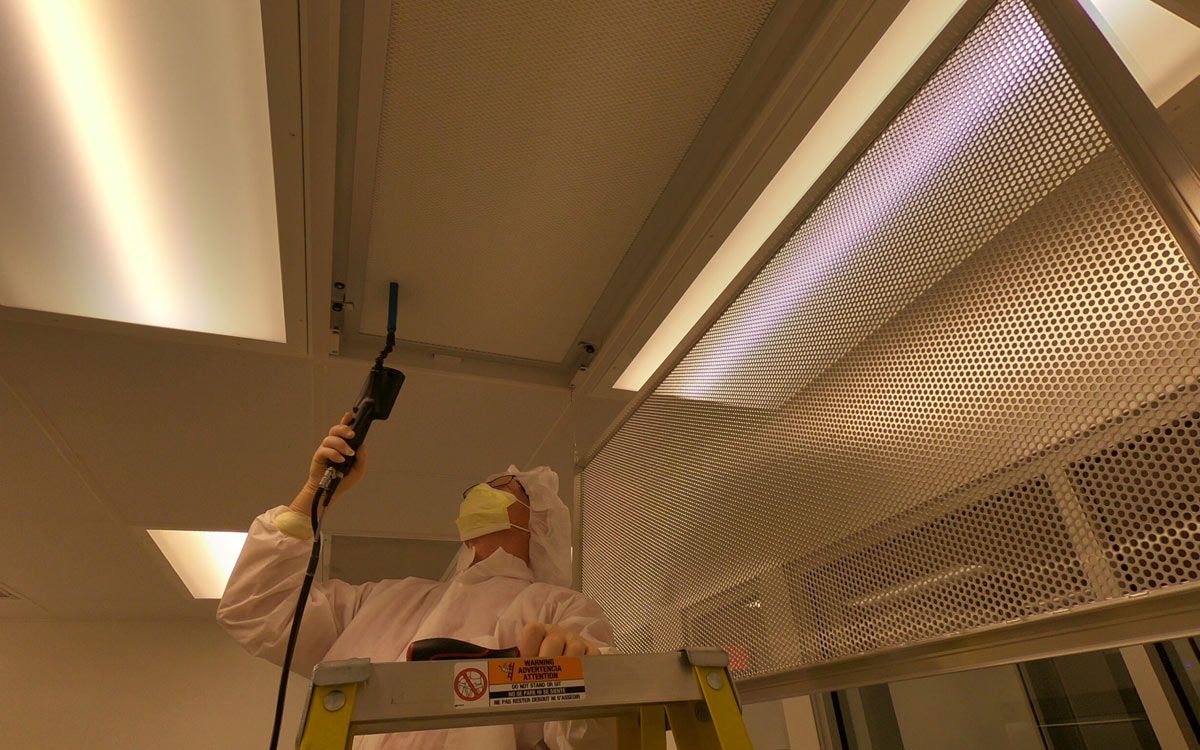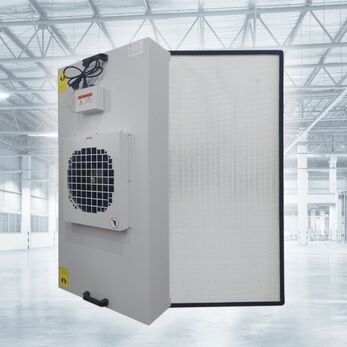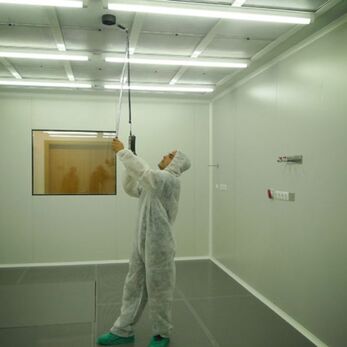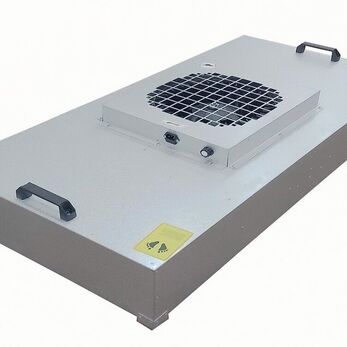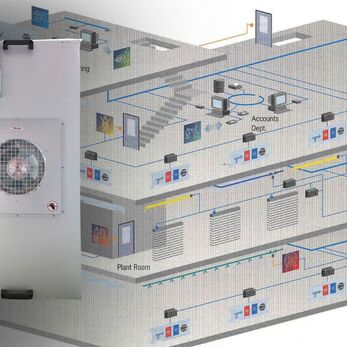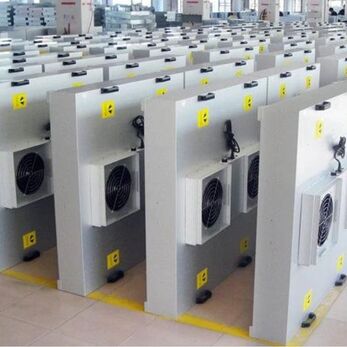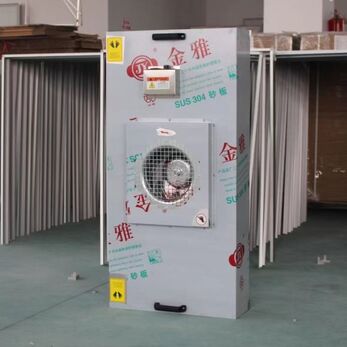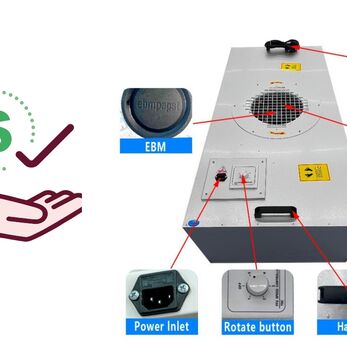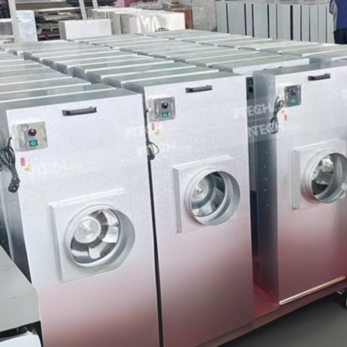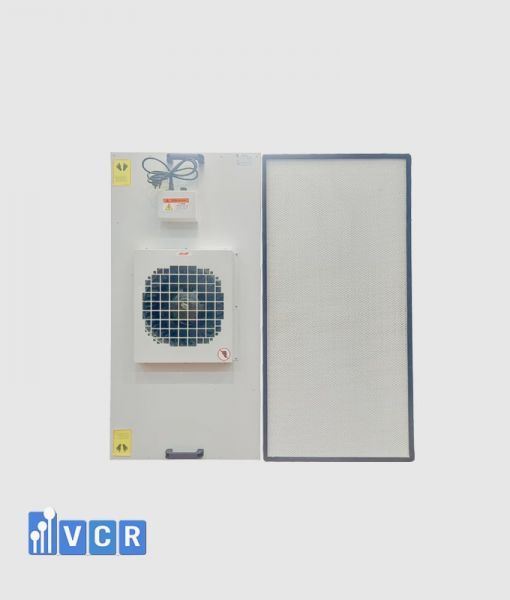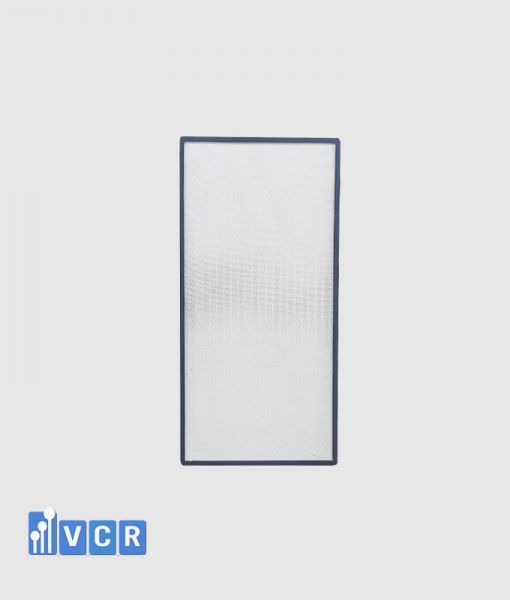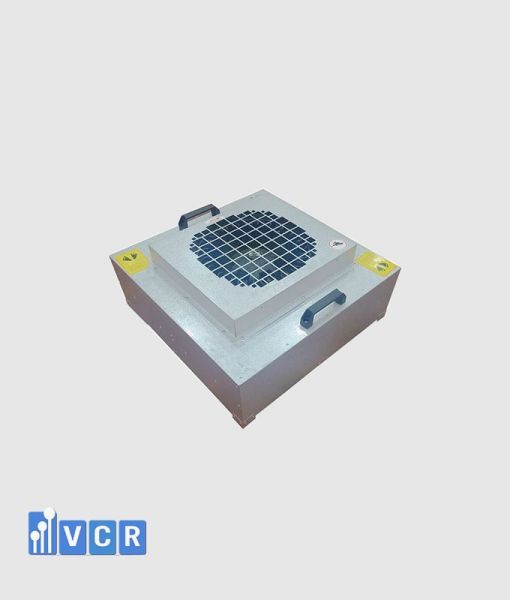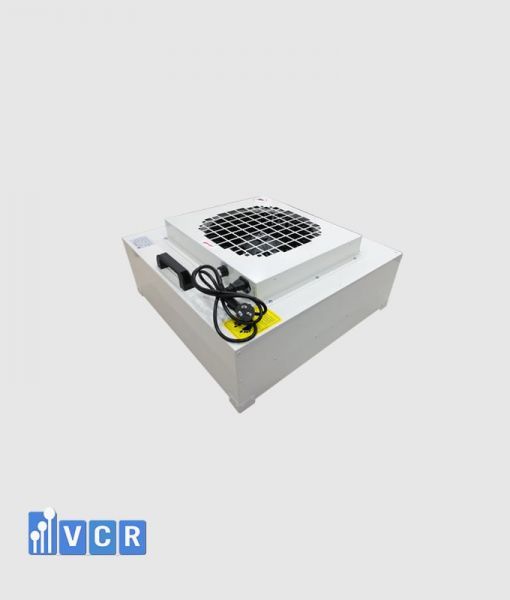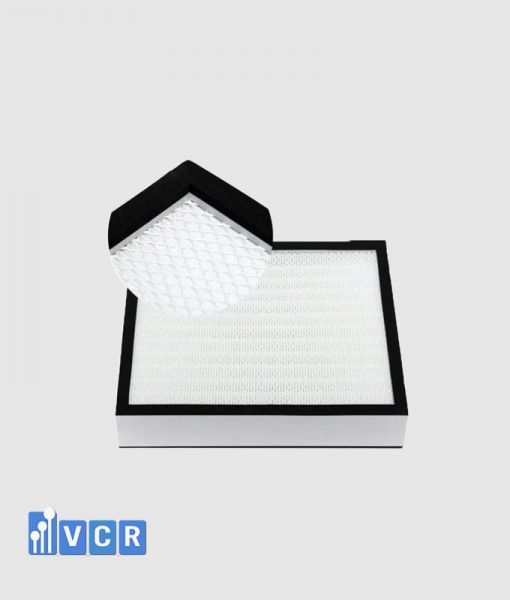Fan filter units (FFUs) rely on high-efficiency particulate air (HEPA) filters to maintain pristine cleanroom environments. Ensuring the integrity of these filters through regular leak testing is crucial for optimal performance.
This article delves into the intricacies of HEPA filter structure, performance, and the essential steps involved in conducting leak testing within FFUs.
I. Understanding HEPA Filters
1. Structure:
- Filter Media: Ranges from H13 to U17 grades, offering progressively higher removal efficiency for smaller particles.
- Sealants: Urethane rubber or hot melt adhesives ensure airtightness around the filter media.
- Frames: Typically made of aluminum, stainless steel, or plastic, providing structural support.
- Separators: Hot melt adhesives maintain spacing between folds, maximizing filter surface area.
- Nets: Honeycomb nets protect the filter media from physical damage.
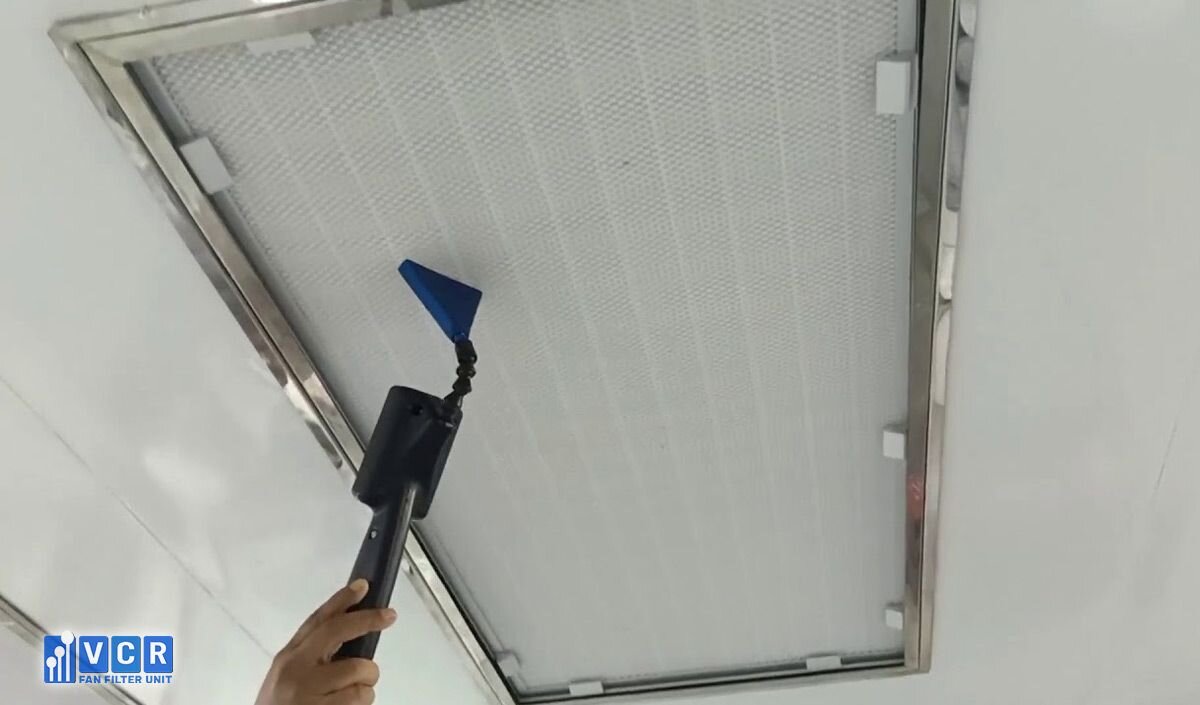
See more: Components of Fan Filter Units
2. Efficiency:
- Filtration efficiency increases with grade, ranging from 99.99% for H13 to 99.999995% for U17 at specific particle sizes.
- Higher efficiency filters are generally more expensive and may have slightly lower airflow capacity.
3. Frames:
Customized thicknesses cater to specific installation requirements.
External frames enhance structural integrity and offer additional sealing options.
II. Unveiling the Leak Testing Process
1. Preparation:
- Record filter quantity and codes for proper identification.
- Verify proper operation of the air conditioning system, ensuring correct airflow velocity and pressure.
2. Particle Introduction:
- An aerosol generator releases upstream particles (often Polyalphaolefin Oil, PAO) into the airstream.
- Optimal particle concentration (10-20 micrograms PAO per liter) ensures accurate leak detection.

See more: What is Fan Filter Unit
3. Concentration Testing:
An aerosol photometer measures upstream particle concentration to establish a baseline.
4. Leak Scanning:
A leak scanner meticulously scans the filter surface, both internally and externally, to detect any particle concentration anomalies indicative of leaks.
5. Evaluation and Action:
Leakage points identified through scanning require prompt repair or filter replacement.
Re-testing after remediation ensures successful leak mitigation.
By understanding the intricacies of HEPA filters and leak testing procedures, cleanroom professionals can ensure the optimal performance of their FFUs, safeguarding the critical cleanroom environment.


